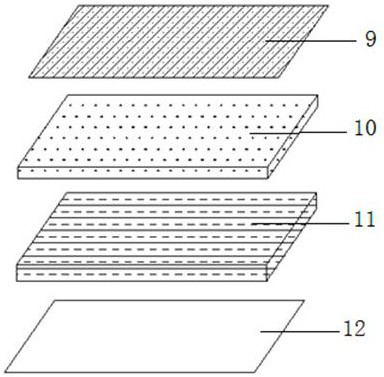A method for ecological restoration of river polluted sediment
A technology of polluted bottom sludge and ecological restoration, which is applied in the direction of sludge treatment, water pollutants, biological sludge treatment, etc., and can solve the problems of difficulty in finding a storage site, complicated treatment process, and high transportation cost of dredged bottom sludge
- Summary
- Abstract
- Description
- Claims
- Application Information
AI Technical Summary
Problems solved by technology
Method used
Image
Examples
Embodiment Construction
[0033] The method of the invention realizes the ex-situ treatment and in-situ restoration of the river channel polluted sediment in the channel. like figure 1 As shown, the polluted river course is divided into sediment storage area 2, isolation area 5 and in-situ coverage area. Set up a sediment storage area 2 on the bank of the river, and set up a heavy metal isolation blanket 4 at the bottom and around the bottom of the sediment storage area 2 for anti-seepage treatment, dig out the sediment that is seriously polluted by heavy metals, and place it in the sediment after dehydration treatment In the stacking area 2, solidifying agent is added to solidify, and heavy metal enrichment plants 3 (such as reeds, cattails, etc.) are planted on the solidified bottom mud to enrich and absorb heavy metals in the bottom mud, and gradually remove them through plant harvesting. An isolation area 5 is set between the bottom mud storage area 2 and the river channel. At least one isolation ...
PUM
| Property | Measurement | Unit |
|---|---|---|
| thickness | aaaaa | aaaaa |
| thickness | aaaaa | aaaaa |
| particle diameter | aaaaa | aaaaa |
Abstract
Description
Claims
Application Information
 Login to View More
Login to View More - R&D Engineer
- R&D Manager
- IP Professional
- Industry Leading Data Capabilities
- Powerful AI technology
- Patent DNA Extraction
Browse by: Latest US Patents, China's latest patents, Technical Efficacy Thesaurus, Application Domain, Technology Topic, Popular Technical Reports.
© 2024 PatSnap. All rights reserved.Legal|Privacy policy|Modern Slavery Act Transparency Statement|Sitemap|About US| Contact US: help@patsnap.com










